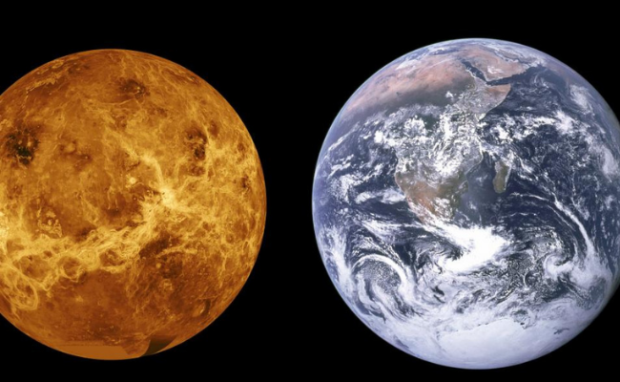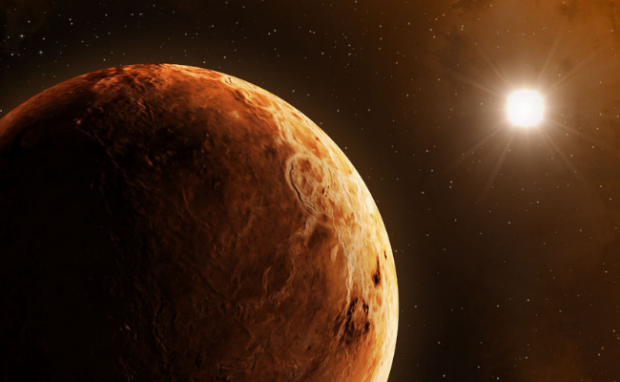Venus dayside atmosphere contains oxygen
Scientists found atomic oxygen in Venus’ daytime atmosphere, giving new insight into the dynamics of the planet’s atmosphere. Physicist Heinz-Wilhelm Hubers of the German Aerospace Center (DLR) and his team found oxygen in 17 locations, offering untapped research data for the “Earth’s evil twin.”
NASA and other space agencies have been delving deeper into what they can learn about heavenly bodies. Specifically, detecting more oxygen sources on Venus can help us understand this member of our solar system. More importantly, those could help astronauts Venus in future space exploration missions.
This article will discuss how researchers found Venus’s oxygen sources. Later, I will cover other ways NASA and other space agencies are trying to provide oxygen and other essentials for astronauts.
How did researchers find Venus’ oxygen sources?

Heinz-Wilhelm Hubers and his colleagues studied data from the Stratospheric Observatory for Infrared Astronomy (SOFIA) flying high in Earth’s atmosphere. Its plane had three flights, collecting data on 17 spots on Venus.
It took seven images on the dayside, nine on the nightside, and another at the terminator. The latter is the transitional region between the day and night sides.
The team detected atomic oxygen in all 17 locations, with a maximum concentration at an altitude of roughly 100 km or 62 miles. Interesting Engineering says that height is between two dominant atmospheric circulation patterns on Venus.
The first is the powerful super-rotating flow below 70 km that rotates against the planet’s spin. The other is the subsolar-to-antisolar flow in the upper atmosphere above 120 km.
Others call Venus “Earth’s evil twin” because they’re roughly the same size. However, Venus has noxious carbon dioxide clouds covering its atmosphere.
These produce a greenhouse effect with average surface temperatures of roughly 464°C or 867°F. Also, it has deadly winds that travel around 700 km or 400 miles.
Understanding Venus’ atmosphere could help us contrast it and Earth more deeply. Discovering atomic oxygen in its dayside atmosphere is one of the ways that can help your research.
You may also like: Perseverance Mars rover makes oxygen
Atomic oxygen isn’t the same one we breathe. The latter is molecular oxygen, or O2, made up of two oxygen atoms. Venus’ atomic oxygen quickly binds with its carbon monoxide particles.
Then, they recombine into carbon dioxide. Scientists know long ago how Venus uses atomic oxygen, but the study is the first time they saw it on the dayside.
“Future observations, especially near the antisolar and subsolar points but also at all solar zenith angles, will provide a more detailed picture of this peculiar region and support future space missions to Venus,” the researchers wrote.
Are there space projects similar to this study?

NASA’s MOXIE project might function on Venus thanks to its newly discovered oxygen sources. The acronym stands for Mars Oxygen In-Situ Resource Utilization Experiment.
It extracts oxygen from its surroundings so that astronauts can last in space longer. The organization said it created 122 grams of oxygen over the last two and a half years. That’s enough to keep a dog alive for 10 hours. It may seem trivial, but NASA hailed it as an unexpected success.
MOXIE’s principal investigator, Micheal Hecht, said, “We rolled the dice a little bit. It was ‘hold your breath and see what happens.” Space.com says the machine takes carbon dioxide molecules from Mars and separates their oxygen from carbon.
The MOXIE website says it is a “solid oxide electrolyzer cell,” which functions like a fuel cell in reverse. Fuel cells turn fuel and oxygen to produce a stable chemical product and electricity.
That’s how hydrogen fuel cells for automobiles work. On the other hand, a solid oxide electrolyzer cell takes water and electricity to make oxygen and hydrogen.
The NASA oxygen maker uses carbon dioxide instead of water because Mars has limited sources. You would have to travel to the Red Planet’s northern regions or mine ice underground.
You may also like: Marsquakes reveal the Red Planet’s interior anatomy
University of Surrey researchers also developed a paint that captures carbon dioxide and turns it into oxygen. It contains Chroococcidiopsis cubana, which is a microorganism that produces large amounts of oxygen and absorbs carbon dioxide.
Its natural habitat is similar to the Red Planet’s, making it a viable choice for this oxygen-making paint. The photosynthetic Chroococcidiopsis has an extraordinary ability to survive in extreme environments, like droughts, and after high levels of UV radiation exposure,” microbiologist Simone Krings said.
“This makes them potential candidates for Mars colonization,” she added. The experts admitted that the amount won’t be enough for a Mars habitat. Still, the paint could help produce as much oxygen as needed to make the Red Planet habitable.
Conclusion
Scientists discovered Venus’ dayside atmosphere contains atomic oxygen, providing more insights into the planet’s development. Perhaps it could help us understand how it became so different from our planet.
More importantly, it could provide insights into how NASA and other space agencies could launch future exploratory missions. We might be able to harness that oxygen so that astronauts could breathe on Venus.
Gain more information about Venus’ oxygen on its Nature Communications webpage. Moreover, learn more about the latest digital tips and trends at Inquirer Tech.